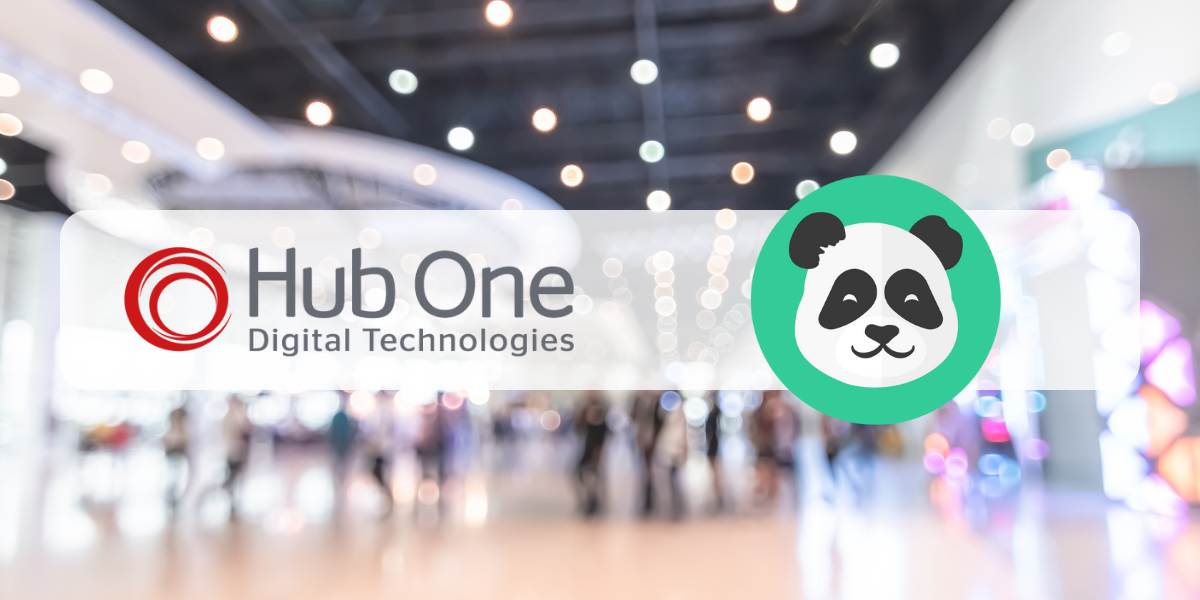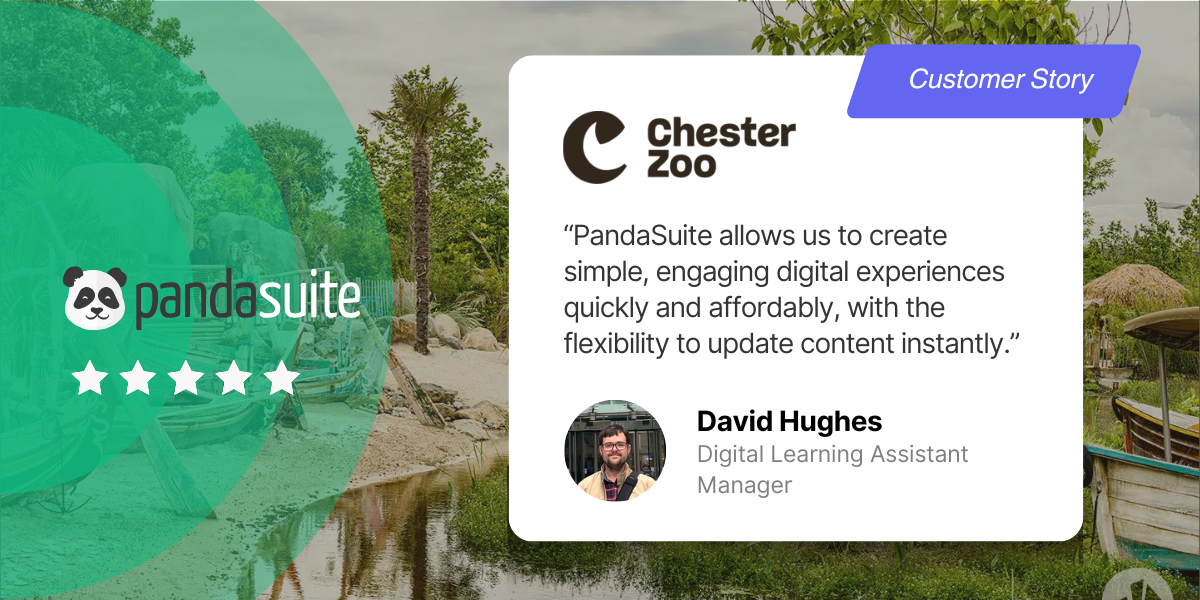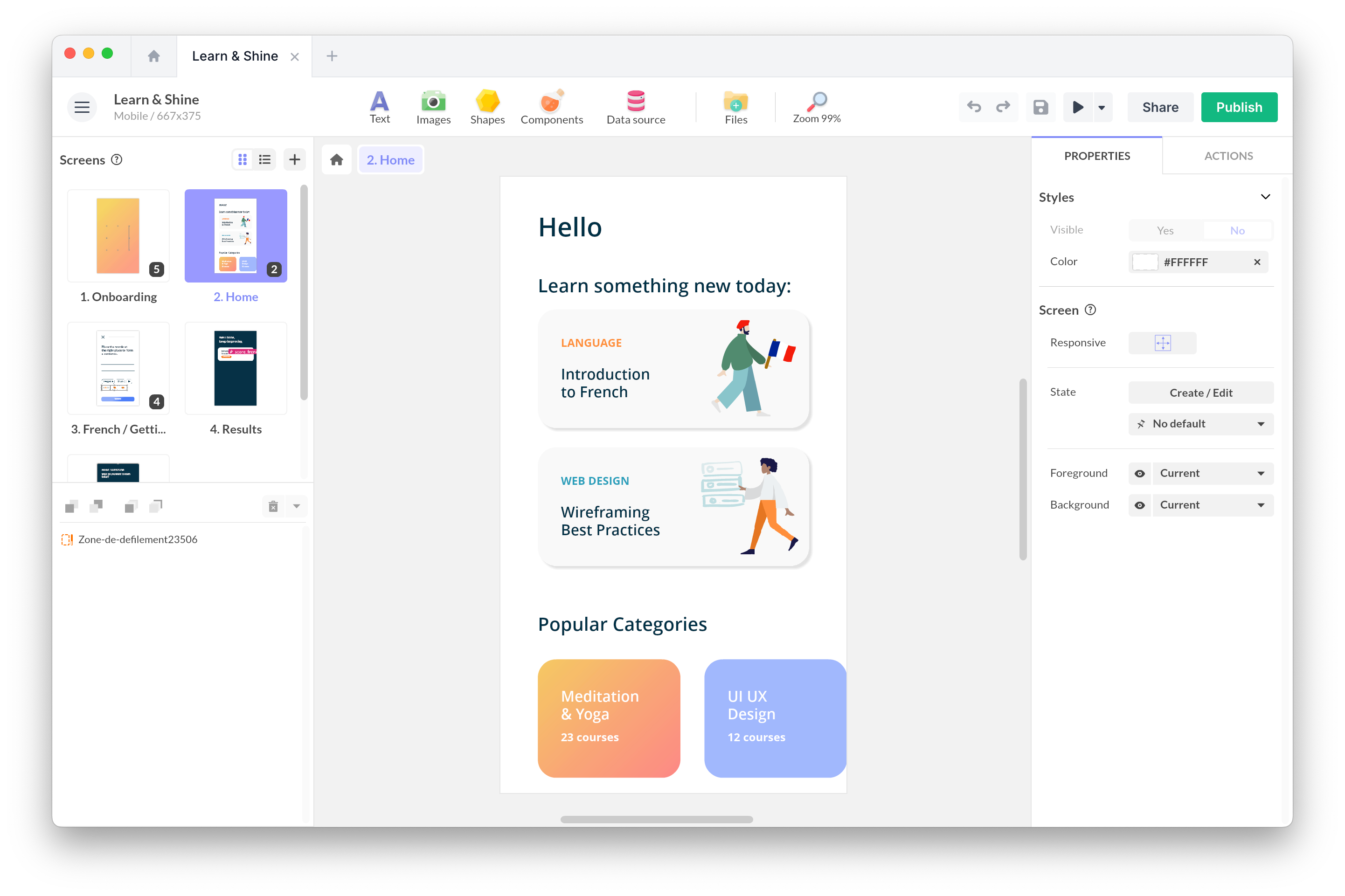Thu, May 25, 2023
How the Cité de l’Architecture et du Patrimoine Produces Its Digital Experiences In-House
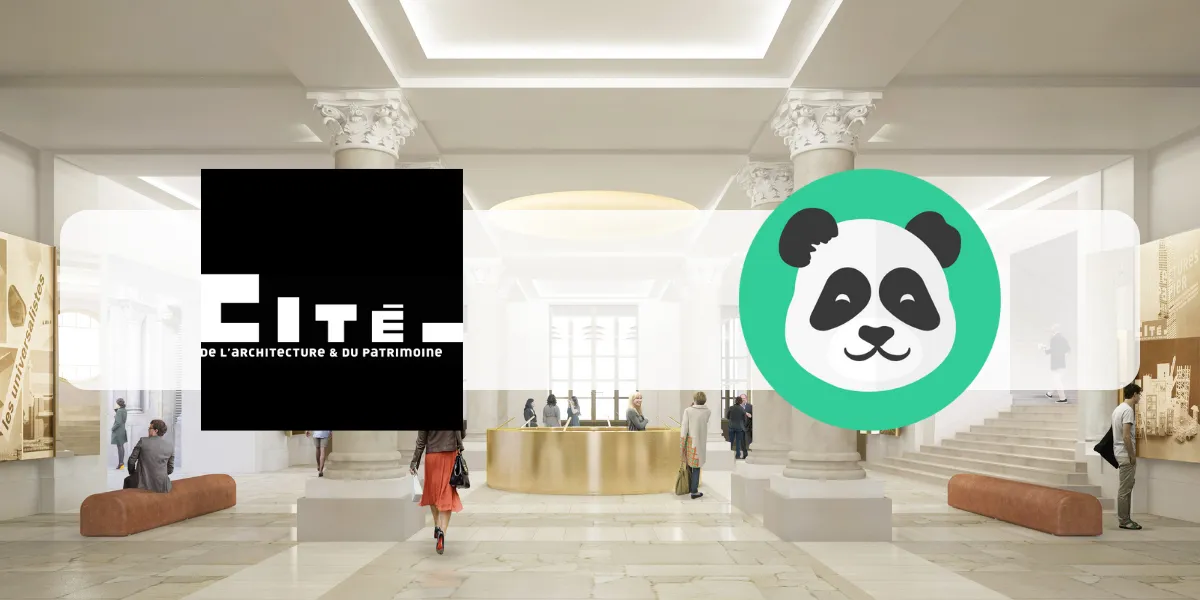
Faced with budget and resource constraints, the Cité de l’Architecture et du Patrimoine decided a few years ago to produce interactive displays and audio guides for its exhibitions in-house using PandaSuite. Several projects later and the adoption of a new strategy, digital technology has become a strategic issue for attracting new audiences. Meet Jérôme Richard, Head of the Digital Distribution department, and Valentine Giret, digital project manager.
For many years, there was only one person dedicated to digital technology among the 130 employees at the Cité de l’Architecture et du Patrimoine. That person was Jérôme Richard. With Valentine joining the team, they are now two people working on these issues, a strong indication of a paradigm shift within the institution.
We had the pleasure of meeting them. They told us about their challenges, processes, and successes related to the production of digital media for this beautiful Parisian museum!
Digital technology despite everything
Jérôme Richard joined the Cité de l’Architecture et du Patrimoine many years ago on the IT help desk side. As he says: “I came to help users get out of their IT adventures.” Gradually, he evolved towards cultural mediation and the creation of multimedia projects as he went along. At that time, the museum was rather hesitant about digital issues: “It was a subject that management was not used to quantifying, illustrating, or contextualizing. As a result, it was more or less abandoned depending on the exhibitions.” But Jérôme persevered and developed his multimedia skills to continue to offer digital technology in exhibitions: web design, motion design, 3D, audio recording, video editing…
When you are alone and with few resources, you have to be organized. Jérôme looked for a digital solution to industrialize the production of touchscreen kiosks. These kiosks often have the same structure from one exhibition to another, a map on which you can select POIs (Points of Interest), videos… He found a tool that allowed him to produce touchscreen kiosks, which he used based on a template and the possibility of adding media. He gained productivity and produced about fifty touchscreen supports in 4 years.
And then one day, he discovered PandaSuite. What he likes about this no-code platform is to go further in terms of UX and user experience, to get out of the constraints of the template, both for touchscreen kiosks and audio guide applications.
”PandaSuite is a sandbox. We are free to do anything. We can play with it, apprehend it, and try to get the most out of it.”
Freedom of creation and speed of execution with PandaSuite
The first mobile application made with PandaSuite was an audio tour for the exhibition “Otto Wagner, master of Viennese Art Nouveau” in 2019.
This mobile app consisted of lists and plans, a structure that is found in many audio guides. Jérôme worked on the project all weekend, created all the exhibition content, the slideshows… By Monday, the application was ready! He also produced the touchscreen kiosks for the exhibition.
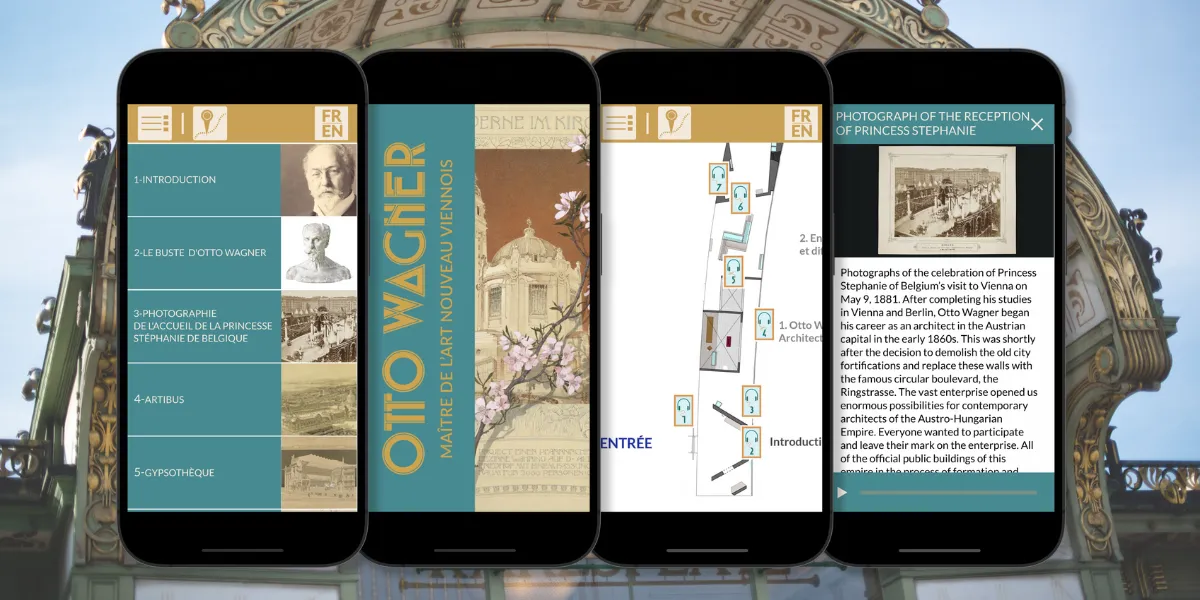
This project was good training for Jérôme: “That’s how you learn. By getting your hands dirty, a little in a rush.”
Beyond the speed of execution of the platform, he appreciates the instant preview of his work. With other tools, it was more complicated. “We had to generate the application every time before previewing it. We don’t know what we did until we’ve produced the application. This added an hour, an hour and a half of process. With the PandaSuite Viewer application, it is possible to clearly see what your application looks like in real-time.”
As there are more and more projects (such as Art Deco and Treasures of Architecture), Jérôme – now joined by Valentine – establish some guidelines but keep a lot of customization for each project. “Exhibition producers and curators prefer each exhibition and each device to have its own identity.”
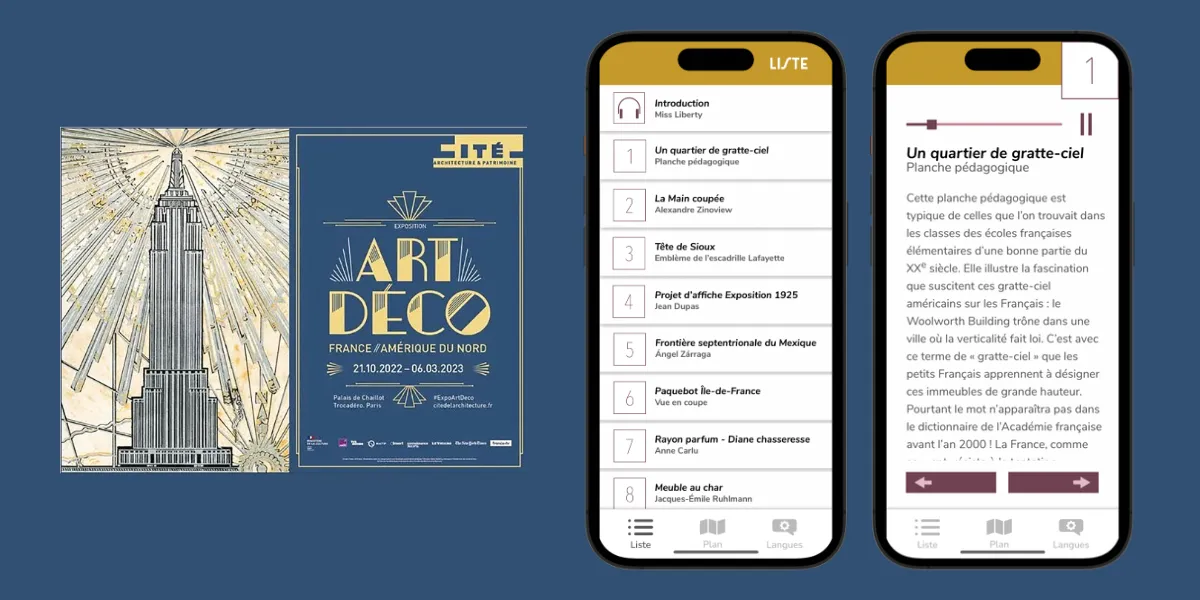
Finding place in exhibition production
At the Cité de l’Architecture et du Patrimoine, the deadlines for producing an exhibition are quite short: it takes about a year between the launch of the project, the selection of the curators and scenography, the establishment of production, and the opening of the exhibition.
How to integrate into this process when you are far from the strategic priorities? The team had to think about solutions: “We proposed some sort of catalogues to the exhibition producers. At the beginning of the project, we offer them a catalog of possibilities, they pick from it and we start working on the project and roll it out. But this method never caught on for reasons of work organization, lack of knowledge, production delays, etc.”
At that time, digital technology was considered the “fifth wheel” of the coach.: “Sometimes we were asked, a month before the exhibition, to produce a digital project. These deadlines were not tenable. It was a source of stress, and the result was unsatisfactory for everyone.”
Today, the management has changed and so have the strategic priorities: the museum is looking to expand its audience beyond architecture and heritage enthusiasts. Digital technology appears as a solution to achieve this. Now, the digital team is integrated into the steering committee, on an equal footing with other departments such as public or communication, which allows it to intervene earlier in the exhibition production process and promote synergies.
Imagining new narratives
This new organization allows for new ideas to emerge.
With the exhibition Notre-Dame de Paris, From Builders to Restorers, the museum wanted to provide a different format, linked to the world of video games. “We brainstormed within the inter-service, which we had never done before. By involving people who were not at all involved in the project, we went off the beaten track even with very short deadlines. We launched the project last November for release in March.”
This is how Sententia was born. The objective of this puzzle game is to help the ghost of Viollet-le-Duc, the restorer of the building, return to the cathedral by proving its identity.. The idea of the smartphone interface came from a curator. “We don’t forbid anything in terms of interface design. Nor in terms of user experience. The important thing is to have a little time and to think a little.”
It is essential to save time to organize testing.
After conducting initial tests with simulated content and voices, the team discovered that the game scenario was not satisfying because it was too challenging.The application used Beacon sensors to trigger audio content based on the visitor’s position. “Initially, we triggered the message when approaching an artwork. After the first tests, we realized that the players were looking for clues related to the artwork, while we were using the artwork as a spatial reference, and that the answer was rather in the audio! We had to rethink this game mechanism.”
They redesigned the application accordingly and met the deadlines.
To overcome these challenges, the team appreciates the support and responsiveness of PandaSuite’s technical support: “During the first tests, we deployed the application on old smartphones that we had in the museum, which hadn’t been used for years. The app didn’t work. I contacted support, and the team fixed the problem for me in the morning. A service like this is priceless.”
New features are also appreciated: “We may not use the new components, but knowing that they are there, that the team continues to work, is very reassuring.”
The issue of profitability
To convince and reassure internal stakeholders, the team keeps an eye on profitability.
”When we provide a digital project, we have to pay attention to the investment required in terms of equipment and human resources. This is one of the analysis axes. The Art Deco project worked very well. The expenses were amortized, the voice recordings, the content production too, since we did everything in-house. And the purchase of smartphones as well. They will be reused on Sententia or on the next app to be produced in October.” Teasing 🤫
Using PandaSuite can help save money. According to “PandaSuite allows you to be extremely productive in no-code and to offer many things by freeing yourself from development costs that are with you. And that’s very practical.”
The management is now aware of the situation. They have expressed that “Today, it costs nothing, it brings back invested money. So, we have to do it.”
It seems that there is no need to convince us ;)
Find more information about the exhibitions and audio guides of the Cité de l’Architecture et du Patrimoine
- The Trésors d’Architecture audio guide application
- The exhibition “Notre-Dame de Paris. From Builders to Restorers”
- The Sententia game

